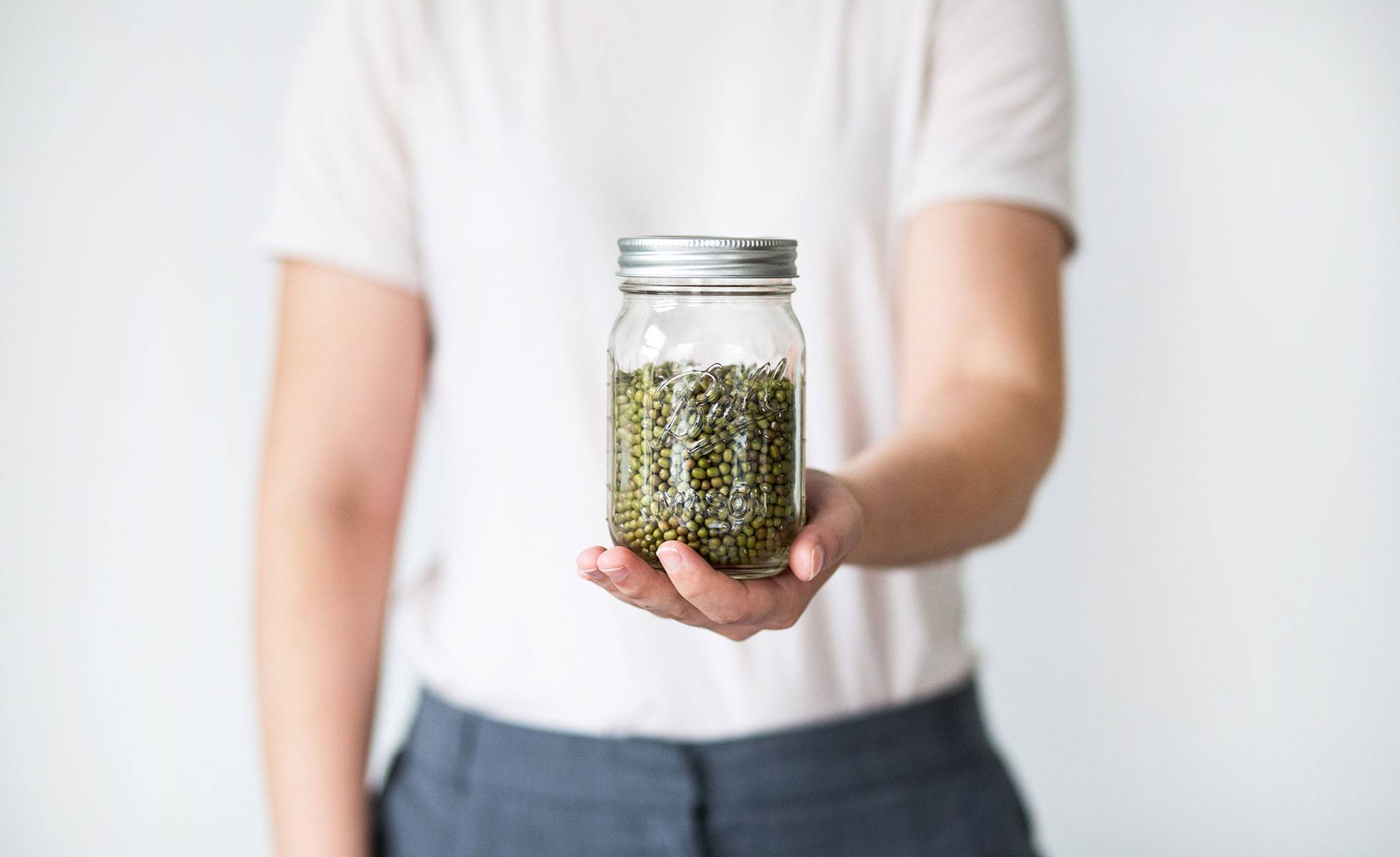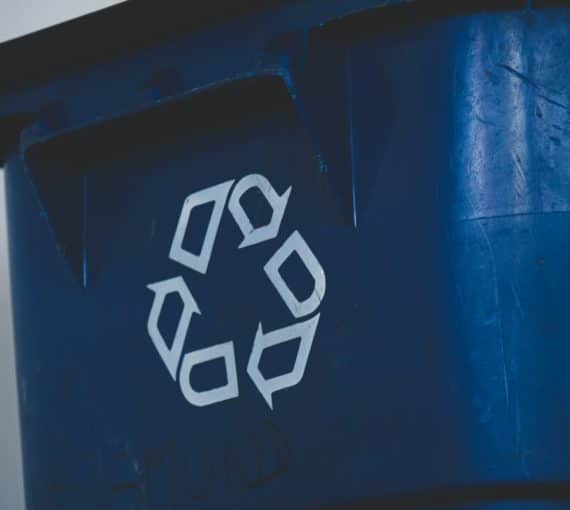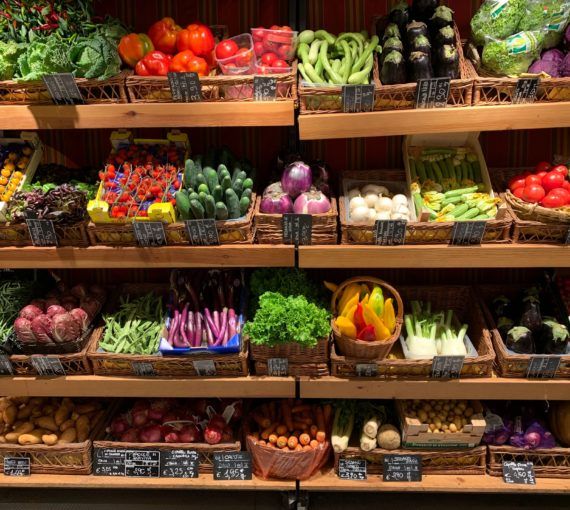
Never recycle another glass jar! They’re easy to wash, have an air tight seal, freeze well and don’t leach toxics. (Photo: Laura Mitulla via Unsplash)
Curious about the zero waste lifestyle?
Want to incorporate low impact living into your daily routine, but don’t know where to begin? The first step is curiosity!
The zero waste lifestyle is a social and environmental movement aimed at reducing the amount of waste generated by individuals, households, businesses and communities.
Going beyond the three Rs
The three Rs (reduce, reuse and recycle) have been a useful maxim for trimming waste for decades. But they’re not enough to solve the problem.
The zero waste movement needs to happen at all levels to address the root causes of waste. The onus is not solely on individuals but corporations and governments too. We can start by giving the other “R’s” deserved attention: refuse, reclaim, revitalize, refurbish, rethink and redesign, to name a few.
Here’s a great start:
- Reduce to only what you need.
- Reuse what you already have before buying or consuming other products that serve the same need.
- Refuse what you don’t need when you don’t need it (e.g., napkins, cutlery, straws, lids, packaging, shopping bags, freebies, etc.).
- Reclaim and find new purposes for what was once waste (e.g., make EcoBricks with unavoidable plastic).
- Revitalize to extend an item’s use or give it a second life before throwing it away or buying new. Get creative!
- Refurbish old items in need of repair.
- Rethink your needs and ask yourself some questions. What’s driving that purchase? Do you really need it? Can you make do with fewer things, such as one with multiple functions?
- Redesign products, systems and lifestyles so that material objects have longer life cycles.
Last, but not least… a final ‘R’. Remember: every small change you make can have a big impact so don’t get discouraged if you’re not living a perfect zero waste lifestyle right way. The most important thing is to take steps, keep trying, be open to learning and make the journey towards zero waste fun!
In order to achieve zero waste, we must do our best within our personal limits and our life context, while letting go of what is not possible for us. The important thing is that we try our best!
Melissa de la Fontaine, author of TENDRE VERS LE ZÉRO DÉCHET
PLEDGE TO GO ZERO WASTE AND GIVE UP SINGLE-USE PLASTICS TODAY!
Twenty zero waste tips
Tip 1: Start small. Getting to zero waste is a journey, not a destination. Start with small changes like doing a waste audit to understand your habits and patterns.
Tip 2: Educate yourself. Learn more about the zero waste lifestyle and join a community of like-minded people who can support and inspire you on your journey. (Start with these tips from the Living Green community.)
Tip 3: Use liquid castile soap in DIY recipes as replacement for many store-bought items such as body wash, diaper wash solution or household cleaners. (Here are 13 other ways to use castile soap, too!)
Tip 4: Choose reusable body care and hygiene products. Buy from a bulk-supply store or make your own — from dental care and body wash to cloth diapers and reusable menstrual cups or pads.
Tip 5: Shop for goods with minimal or no packaging. Support companies with packaging and product return programs (e.g. glass milk bottles, recycling programs, etc.). Bring your own reusable tote and produce bags.
Tip 6: Avoid single-use plastics. Choose reusables for on-the-go meals! Travel mugs, water bottles, cutlery, chopsticks, containers, cloth napkins, straws and resealable snack pouches are all great essentials.
Tip 7: Equip your kitchen. Build an inventory of reusable versions of frequently used items such as food covers, paper towels, beeswax wraps, sponges and silicone baking mats.
Tip 8: Re-invent your laundry habits and take care of your clothes. Storing items with care will help maintain them in excellent condition so they last longer and you don’t have to replace them. Use reusable wool dryer balls instead of dryer sheets. Make your own laundry soap.
Tip 9: Waste less food. Shop smarter, sharpen food-storage skills and create an “eat me first bin” for your fridge. Make the most from your food scraps. Don’t treat “best before” as “expiry” dates. Freeze foods you can’t consume right away. Plan meals.
Tip 10: Start growing food in your backyard, at a community garden or in a window sill planter box. You’ll reduce food waste, eliminate packaging waste, and reduce transportation emissions.
Tip 11: Experience and build community with clothing swaps, repair cafés, toy swaps and food-sharing clubs!
Tip 12: Shop in thrift and consignment stores. Wash items, alter and treat stains before creating the perfect outfit. This also goes for costumes (although fun as a swap as well) and sports gear.
Tip 13: Get creative in ‘reuse’. Reuse silica gel packs. Use mason jars for storage and bulk store shopping. Regift and wrap gifts without gift wrap.
Tip 14: Make your own home cleaners or buy in bulk from a refill shop where you can bring your own reusable containers.
Tip 15: Try the six Rs to avoid e-waste – re-evaluate, research, repair, re-use, recycle and rescue.
Tip 15: Compost food scraps and yard trimmings.
Tip 17: Shop for dry goods in bulk at stores that are either zero waste or allow packaging food in your own containers. Never hesitate to ask!
Tip 18: Go digital. Avoid printing. Buy or borrow e-books, audiobooks, music and movies. Opt for digital bills. Take your name off junk mail lists.
Tip 19: Use a bidet to minimize the need for toilet paper.
Tip 20: Use active or public transportation. Reduce waste from car maintenance.



